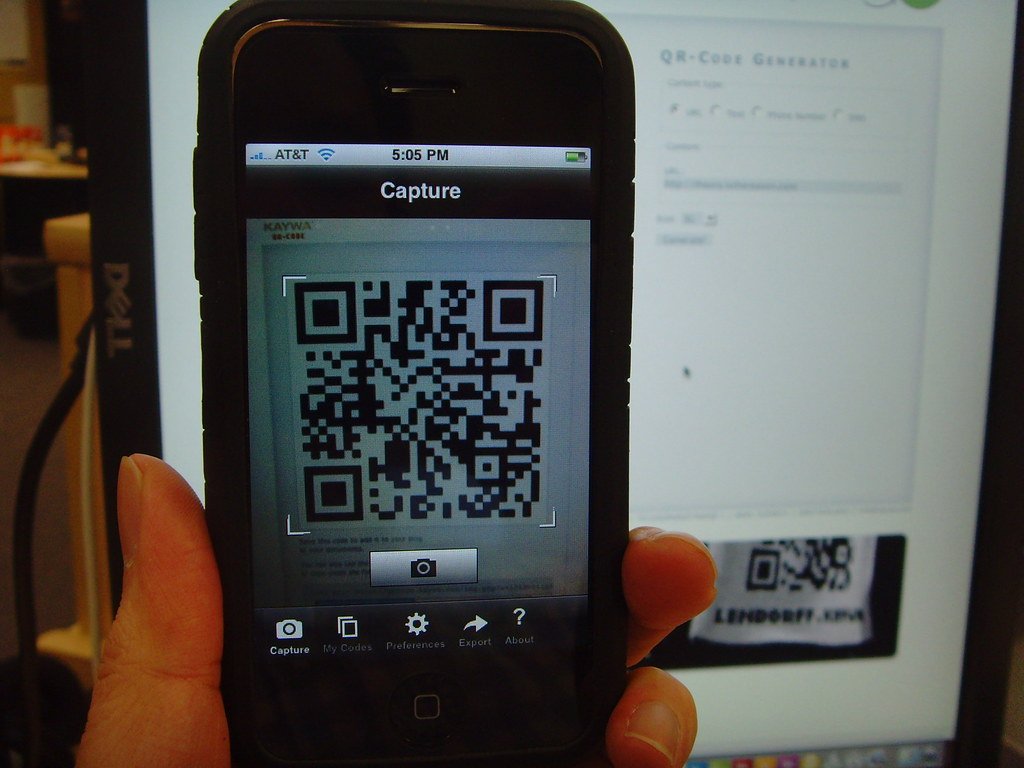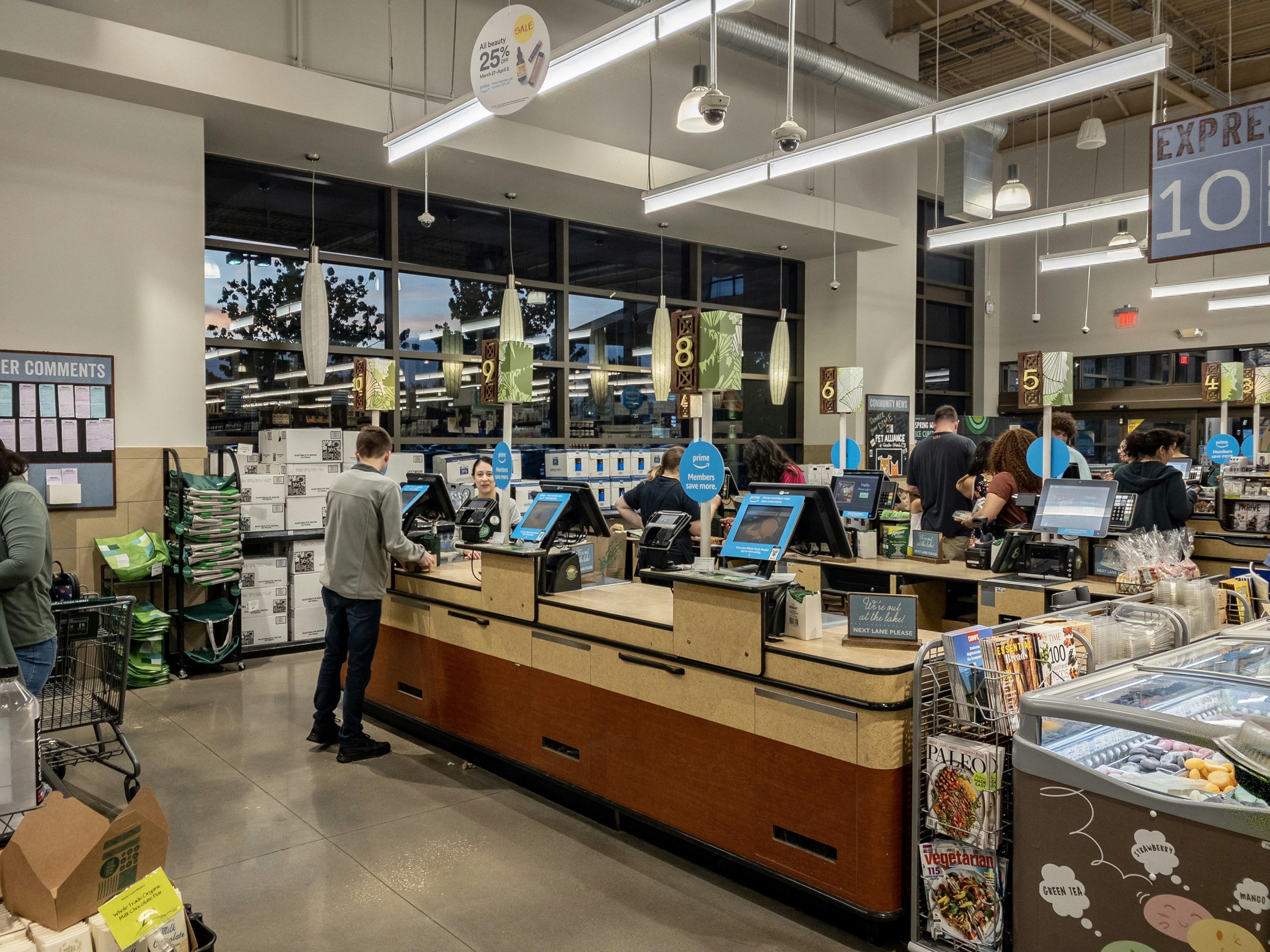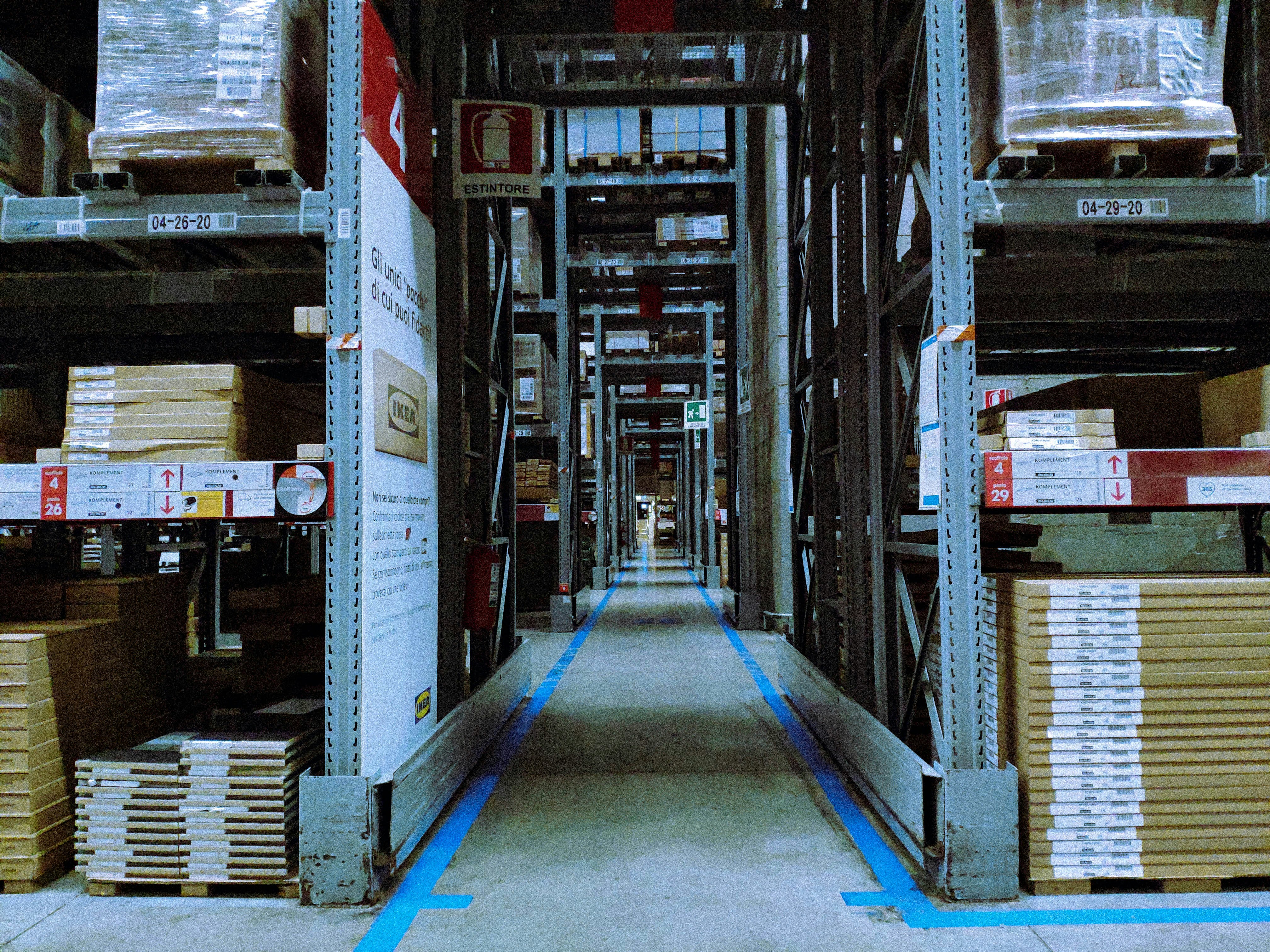Introduction to Barcode Software
Barcode software is a specialized tool designed to create, manage, and interpret barcodes for a wide array of applications across various industries. At its core, barcode software enables users to design barcodes, input data, and control the printing process, allowing for efficient tracking and identification of products. This technology leverages the visual representation of data in a machine-readable format, which can be scanned using barcode readers, smartphones, or tablets, facilitating streamlined operations.
The significance of barcode software has exponentially increased in recent years, primarily due to the growing need for effective inventory management, logistics, and sales processing. Industries such as retail, manufacturing, and healthcare rely heavily on barcode technology to enhance traceability and operational efficiency. By integrating barcode software into their processes, businesses can significantly reduce human error, improve data accuracy, and optimize time-consuming tasks associated with product tracking and inventory audits.
In retail, for example, barcode software simplifies the checkout process, making it faster and more efficient, which ultimately improves customer satisfaction. It provides real-time visibility into stock levels, enabling retailers to replenish items promptly and keep their inventory in check. Similarly, in logistics, barcode technology ensures that shipments are accurately tracked throughout their journey, facilitating smoother supply chain operations. Moreover, sectors such as healthcare utilize barcode systems to track medications and equipment, enhancing patient safety and ensuring compliance with regulatory standards.
As barcode technology continues to evolve, its applications across various industries expand, making the use of barcode software increasingly central to operational success. Thus, understanding the fundamental aspects of this technology is critical for businesses looking to adopt and implement efficient inventory and management solutions.
Key Features of Barcode Software Solutions
When selecting barcode software solutions, it is vital to identify key features that ensure effectiveness and efficiency in your operations. One of the foremost attributes to consider is user-friendliness. A software solution that is intuitive and easy to navigate will significantly reduce the training time required for staff and increase productivity. The interface should be clear, allowing users to quickly learn how to create and manage barcodes effectively.
Another essential feature is compatibility with existing systems. Organizations often rely on various software programs for inventory management and sales tracking. Therefore, it is crucial that the barcode software can seamlessly integrate with these existing tools to enable a streamlined workflow. This integration minimizes the risk of errors and ensures that data remains consistent across platforms.
Customization options also play a critical role in enhancing the user experience. Businesses may require specific barcode layouts and designs tailored to their branding and operational needs. The capability to customize barcodes allows for flexibility in designing labels and optimizing their scan efficiency.
Real-time tracking is another feature to look for in barcode software solutions. This functionality enables businesses to monitor inventory levels and movement, providing valuable insights into stock availability and helping to prevent stockouts or overstock situations. Real-time data is essential for making informed decisions related to inventory management.
Integration capabilities with other tools further enhance the effectiveness of barcode software. The ability to connect with accounting, CRM, and ERP systems allows for improved data sharing and operational efficiency. Many businesses also benefit from support for multiple barcode types, ensuring they can accommodate various products and market requirements.
In summary, key features to seek out in barcode software solutions include user-friendliness, compatibility with existing systems, customization options, real-time tracking, and robust integration capabilities. Evaluating these features will assist organizations in finding the most suitable barcode software that meets their specific needs.
Top Barcode Software Solutions for 2025
As businesses continue to evolve in the digital era, the demand for efficient tracking and management systems has surged, making barcode software an essential tool across various industries. In 2025, several barcode software solutions stand out, each offering unique features that cater to diverse operational needs. Below is a curated list of some of the top barcode software solutions anticipated to make a significant impact in 2025.
1. Barcode Generator Pro: This solution offers an intuitive interface for generating a wide range of barcode types, including QR codes and UPC codes. Core features include batch processing, high customization options, and integration capabilities with popular inventory management systems. Pricing starts at $49.99 per license, making it a cost-effective tool for small businesses and retailers.
2. Wasp Barcode Software: Known for its robust inventory tracking, Wasp Barcode Software provides features like asset management, order processing, and reporting tools. Ideal for manufacturing and logistics industries, it enhances operational efficiency and reduces human error. Pricing typically ranges from $795 to $1,500 based on features, accommodating diverse business sizes.
3. Zint Barcode Studio: An open-source solution, Zint Barcode Studio supports numerous barcode formats and offers a simple interface for users to create custom barcodes. It is particularly advantageous for developers looking for a flexible option without incurring high costs, as it is free to use. However, professional support is available for an additional fee.
Each of these barcode software solutions caters to specific industry needs, from retail and manufacturing to logistics and healthcare. They provide essential functionalities that not only improve tracking and inventory management but also enhance overall operational performance. As we move further into 2025, the integration of these solutions is expected to create efficiencies and drive innovation across various sectors.
Comparison of Top Barcode Software Solutions
In the rapidly evolving landscape of barcode technology, choosing the right software solution can significantly impact operational efficiency and overall business performance. A comparison of leading barcode software solutions is essential for organizations to identify the best fit for their specific needs. This detailed analysis focuses on several key factors, including cost-effectiveness, ease of use, and scalability, which are critical when selecting a barcode software solution.
Firstly, cost-effectiveness is a significant consideration. Many solutions offer different pricing tiers, accommodating varying organizational budgets. For instance, some software provides a free version with limited features, while others may require a subscription for advanced functionalities. It is essential to weigh the initial investment against long-term benefits to determine the right choice, especially for businesses aiming to scale operations over time.
Next, ease of use is vital for ensuring successful implementation and user adoption. Intuitive interfaces and comprehensive support can facilitate quicker onboarding for staff, ultimately leading to improved productivity. Solutions that offer user-friendly design along with substantial resources, such as tutorials and customer service, tend to receive higher satisfaction ratings from users. Software that requires extensive training may hinder the operational flow, thus negatively impacting overall results.
Lastly, scalability is increasingly important as businesses grow and their barcode needs evolve. Companies should consider whether a software solution can accommodate evolving requirements without necessitating a switch to a different platform. Features like multi-user access, enhanced barcode types, and integration capabilities with other software are signs of a scalable solution.
By evaluating these aspects, organizations can make a more informed decision regarding the barcode software solution that aligns with their needs and future growth projections. The following table summarizes key differences among the top solutions, highlighting strengths and weaknesses to further assist in this critical decision-making process.
User Case Studies and Testimonials
The integration of barcode software solutions into various business operations has proven to be a transformative strategy for many organizations. For instance, a small retail store in Seattle implemented a barcode inventory management system that streamlined its supply chain processes. Prior to the implementation, the store faced frequent stock discrepancies, leading to customer dissatisfaction and lost sales. After adopting the barcode solution, inventory accuracy jumped to 98%, significantly reducing the time spent on stock counts and enabling better planning for restocking. The owner reported that customer satisfaction improved markedly, resulting in a 20% increase in sales revenues within six months.
On a larger scale, a leading automotive parts manufacturer utilized barcode software to enhance its production line efficiency. Initially burdened with manual recording systems which were prone to human error, the company faced production delays and increased costs. By deploying a sophisticated barcode tracking system, the manufacturer was able to monitor parts movement in real time. This transition led to a 30% decrease in errors related to parts identification and a 15% increase in production speed. Employees noted an immediate ease in their workflow, attributing this to the streamlined operations enabled by the barcode software.
Another compelling case comes from a major healthcare provider that adopted barcode medication administration systems. This implementation aimed to reduce medication errors and enhance patient safety. Following the adoption, the healthcare facility reported a drastic reduction in medication administration errors by over 40%. Staff efficiency improved as nurses spent less time verifying medications, allowing them to dedicate more time to patient care. The facility’s financial reports indicated that improved safety protocols not only boosted patient trust but also led to a decrease in liability insurance costs.
These case studies demonstrate the significant impact that barcode software solutions can have, regardless of business size. From retail to manufacturing and healthcare, the benefits of improved accuracy and efficiency are evident, showcasing the value of implementing such technological solutions.
Trends in Barcode Technology for 2025
As the demand for efficient data capture and inventory management continues to rise, barcode technology is poised for significant advancements in the coming years. One key trend is the increasing adoption of mobile scanning solutions. With the proliferation of smartphones equipped with powerful cameras, businesses can leverage mobile apps to scan barcodes quickly and effectively, eliminating the need for dedicated scanning devices. This shift not only enhances operational efficiency but also reduces costs associated with purchasing and maintaining traditional hardware.
Artificial intelligence (AI) is set to play a vital role in transforming barcode technology. AI can facilitate real-time data analysis, improving inventory accuracy and forecasting demands. By integrating machine learning algorithms with barcode scanning software, companies can detect patterns in data that allow for smarter decision-making, thereby optimizing their inventory management processes. Enhanced data analytics also paves the way for more personalized customer experiences, as businesses can tailor their offerings based on comprehensive insights derived from scanned data.
Moreover, the integration of barcode technology with Internet of Things (IoT) devices is expected to revolutionize the industry. IoT-enabled sensors can track products throughout the supply chain, providing real-time visibility and improving traceability. As businesses adopt smart inventory systems, barcodes will become increasingly integral to the ecosystem, bridging the gap between physical and digital assets. This cross-functionality will elevate operational efficiencies and enable seamless data exchange across various platforms.
Lastly, QR codes are witnessing a resurgence in popularity, largely driven by their versatility and ease of use. As consumers become more accustomed to scanning codes for product information, promotions, and contactless interactions, businesses are recognizing the benefits of incorporating QR codes into their marketing and operational strategies. This increased usage signals a growing trend towards custom solutions that cater to customer engagement while enhancing the functionality of existing software platforms.
Challenges in Barcode Software Adoption
The adoption of barcode software solutions, while beneficial in streamlining operations, often presents various challenges that businesses must navigate. One of the primary hurdles encountered is the resistance to change from employees accustomed to traditional methods. Employees may feel apprehensive about transitioning to new technologies, fearing that they may not have the necessary skills to operate them efficiently. To mitigate this challenge, companies can implement change management strategies, which include engaging staff in the selection process of the new software and highlighting the advantages it brings to their daily tasks.
Another significant challenge is the need for staff training. Many businesses overlook the importance of comprehensive training programs. Without proper education on how to utilize the barcode software effectively, employees may struggle to take full advantage of its features. Providing ongoing training sessions, instructional materials, and accessible support can enhance users’ comfort levels and proficiency, allowing them to utilize the software to its full potential.
Integration issues with legacy systems pose additional challenges. Many organizations utilize outdated software solutions that may not easily interface with newer barcode applications. Ensuring interoperability between systems is crucial for a seamless transition. It is advisable for businesses to assess their current technology landscape and possibly invest in middleware that acts as a bridge between legacy systems and modern barcode solutions. This strategic approach can facilitate a smoother integration process, enhancing overall operational efficiency.
Finally, cost considerations cannot be ignored. While the investment in barcode software may offer significant long-term savings and productivity gains, the initial costs can pose a barrier to adoption. Businesses are encouraged to conduct a thorough cost-benefit analysis to understand the potential return on investment. Moreover, exploring various pricing models, such as subscription-based services, can make adopting barcode software more financially feasible.
Best Practices for Implementing Barcode Software
Implementing barcode software successfully requires careful planning and execution. It is essential to start with a comprehensive evaluation of your organization’s specific needs and how barcode technology can streamline operations. Begin the process by involving key stakeholders early in the planning stages. Their insights can help identify potential challenges and ensure that the chosen solution aligns with your business objectives.
Once the planning is complete, focus on selecting the right hardware that complements your barcode software. This includes barcode scanners, printers, and mobile devices, all of which should be compatible with the software to guarantee seamless integration. It is crucial to conduct thorough testing of the hardware and software together to ensure that they function efficiently as a unified system.
Staff training plays a vital role in the successful implementation of barcode software. Devote adequate time to training sessions that cover not only the technical aspects of the software but also its everyday applications in your organization. Employees should feel confident in using the software, so providing hands-on training and accessible user manuals is beneficial. Regularly update this training as the software evolves to keep staff informed of new features and best practices.
Ongoing support is equally important for maintaining the performance of the barcode software. Establish a dedicated support team or contact point for employees to reach out when they encounter issues. This team should have the expertise to troubleshoot problems effectively and offer guidance on best practices. By fostering a culture of continuous improvement and support, your organization can realize the full potential of barcode software, enhancing productivity, accuracy, and efficiency.
Conclusion: Choosing the Right Barcode Software
As we have explored in this blog post, selecting the appropriate barcode software solution is crucial for businesses of all sizes. With the rapid advancements in technology and the growing complexities of inventory management, the right software can significantly enhance efficiency and accuracy. It is vital to evaluate various options based on specific needs, budget constraints, and operational requirements. This tailored approach allows businesses to leverage barcode solutions that not only meet current demands but also adapt to future growth and changes.
When assessing barcode software, consider the features and functionality that align with your business model. Many solutions now offer customizable options, scalability, and integration with existing systems. These factors are essential for ensuring seamless operation and maximum return on investment. Additionally, prioritizing user-friendly interfaces can facilitate quicker staff training and reduce errors associated with complicated systems.
Budget is another critical consideration; while it can be tempting to opt for the least expensive solution, investing in a more robust system may provide better long-term value. Explore not only the upfront costs but also potential savings generated through increased productivity and enhanced inventory management capabilities. Understanding both direct and indirect costs associated with barcode software can guide informed decision-making.
Ultimately, the right barcode software is one that aligns with your operational goals and enhances your overall business efficiency. As you navigate your options, remember that a well-chosen solution will serve as a foundation for streamlined processes and improved data accuracy, paving the way for future success. Take the time to analyze your specific needs and invest wisely in a software solution that supports your vision for growth in 2025 and beyond.
© barcodly.com- All rights reserved





